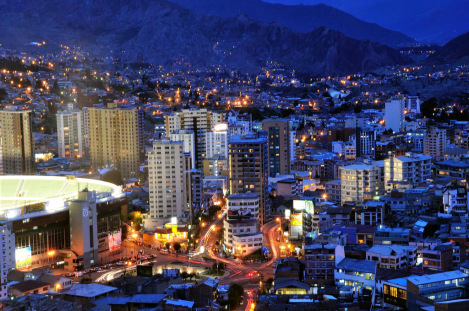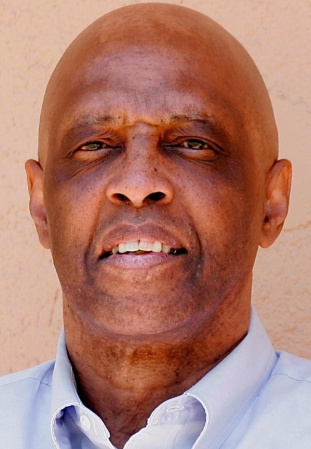
La Paz, Bolivia, at Night
If you want to land in a capital city so high up that you will get an immediate nosebleed and tumble headfirst down the steps of the airplane, you would pick La Paz, Bolivia. The average altitude of El Alto, where the airport is located, is 13,615 feet (or 4,150 meters). The city itself is about 2,000 feet lower, about the same altitude of Lhasa, Tibet.
In The Old Patagonian Express, Paul Theroux talks about his accident-proneness at high altitude. Taking some aspirin in his hotel room, he drops the water tumbler into the sink. Trying to pick up the pieces, he cut himself badly and decided to seek medical attention:
But I had not gone two blocks when the new towel I had wrapped around my hand was soaked with blood. It did not hurt, but it looked dreadful. I hid it under my arm so as not to alarm pedestrians. Then the blood dripped on the sidewalk and I thought: God damn. It was deeply embarrassing to be walking through this large gray city with a blood-soaked towel on my hand. I began to wish I had tried the rubber band. I left spatters of blood on the crosswalk, and more spatters on the plaza. I asked directions to the pharmacy and saw, when I looked back, that there was a pool of blood where I had paused, and a horrified Bolivian watching me. I tried not to run: running makes your heart beat faster and you bleed more.
Of course, if Theroux had been trying to cope with the altitude by taking aspirin, his blood was not likely to clot soon. He should have chewed coca leaves with an alkaloid, or drank some mate de coca tea. But then, this was the 1970s, and this was not generally known to gringo travelers.
Bolivia has had a violent political history, with presidents changing office approximately once a year—or even more often. In 1948, some angry rebels yanked President Gualberto Villaroel from the balcony of his palace and proceeded to lynch him from a lamppost in the plaza. Fortunately, the present government is a little more stable
34.052234 -118.243685 Rate this:Los Angeles, CA, USA Share this:
- More





